Abstract
This article analyses the concept of hardiness. Various approaches to the study of the hardiness concept in foreign and domestic psychology are considered. It is noted that most foreign studies are based on the theory of S. Muddy, who considers the "hardiness" as a General measure of mental health. Empirical research, carried out mainly in the social psychology, have a narrow applied nature. It is noted that in domestic psychology the problem of hardiness studied from different angles. The researches analysis of connection of hardiness with various characteristics of the personality is carried out. Hardiness is considered as a property of personality, formed during life. It is noted that hardiness has natural prerequisites and is formed under the influence of social factors. The results of an empirical study of the adolescents hardiness living in urban and rural areas. It is shown that adolescents living in the city are quite harmonious; adolescents with high values on one scale also have high values on other scales. Most adolescents living in rural areas are disharmonious; adolescents with high values on one scale have low or average values on other scales. Based on the analysis the data distributed on three scales: "involvement", "control", "risk taking" reveals a certain pattern; a group of adolescents living in the city are more homogeneous in the formation of hardiness than adolescents living in rural areas.
Keywords: Controlhardinessinvolvementrisk taking
Introduction
Long before scientific psychologists began to study the ability of a person to survive in difficult situations, this problem was highlighted by writers. The epics showed the main character who is a lone hero that performs feats. As a rule, the source, the cause of his power and endurance was the divine origin, destiny, described in the prophecies. Increasing interest of psychologists to the ability of a person to survive in difficult situations was provoked by the great Patriotic War. Victor Emil Frankl Austrian psychologist in 1942-1945 was a prisoner of the Theresienstadt concentration camp, where he laid the foundations of the method of existential psychoanalysis-Logotherapy (Frankl, 2001). Frankl believed that man is not only the desire for pleasure or power, but also for the meaning of existence. Based on Frackl’s research, in 1979 Kobasa introduced the concept of “hardiness” into psychology. Subsequently, the concept of resilience was developed by Maddi and Kobasa (1984). The article presents the results of theoretical and empirical studies of the hardiness of adolescents living in rural and urban areas.
Problem Statement
American psychologist Maddi and Kobasa (1984) considered chronic existential neurosis as a typical state of modern life. The existential crisis of the "little man", whose identity is rigidly determined by the social role, generates apathy, boredom, chronic state of meaninglessness of existence. S. Maddi called such people a premorbid personality. Another type of people who can be actively involved in life, believe that they can influence events and are ready to act was called the ideal identity. The concept of “hardiness” was introduced to describe these people; a literal translation can mean “endurance”, “stamina”, and “fortress. The authors Maddi and Kobasa (1984) considered "hardiness" as an integrative quality of personality that helps to survive a stressful situation without reducing work efficiency and without falling into depression. Leontiev proposed to designate this characteristic in Russian as
Research Questions
Works on the problem of hardiness in domestic psychology appeared relatively recently. This is primarily due to the total politicization of Soviet society. Supported by the government myth of the most prosperous, happy children, youth, persecution of psychology, did not allow scientists to talk openly about the problems. As the pioneers were taught, the public interest is always higher than personal, since individual characteristics, differences in values could not be at all. The first works on hardiness were devoted to the problems of suicide. Knizhnikova (2005), considers the formation of components of hardiness as a means of preventing suicide of adolescents. In her understanding, " Hardiness as a formed integral characteristic of the personality is determined by: optimal semantic regulation of the personality, its adequate self-esteem, developed strong-willed qualities, a high level of social competence, developed communication skills" (Knizhnikova, 2005, p. 4). Nalivayko (2006) believes that hardiness occurs in early childhood, under the influence of a large number of factors. The behavior most clearly begins to manifest itself in adolescence as a result of social factors. There is a positive correlation of hardiness with all test scales of life orientations (goals, process, result, locus of control - self, locus of control-life). She also revealed the difference between girls and boys in the characteristics of hardiness. The importance of social factors was confirmed by Berezkina (2006). She proved the possibility of creating pedagogical conditions that contribute to the development of resilient qualities of future professionals. In contrast to the program HELP by S. Maddy, Berezkina's program is aimed not only at the formation of specific strategies of behavior, but also on the education of morality, awareness of the integrity of the "self", which manifests a strong desire to learn. Stetsishin (2008) found that Clinician psychological resource of hardiness is the factor of extroversion, concreteness of thinking. Personal resources include the orientation of the individual to business activity, a high level of self-actualization. Loginova (2010) used as a research base psychology students and found that hardiness is associated with extroversion, general internality, and rigidity. The study also revealed differences in the hardiness content of management students and psychology students, part-time and full-time students.
Purpose of the Study
The aim of the study is to investigate the factors of hardiness formation. Habitat is considered as the main factor. The study is aimed at identifying differences in the formation level of adolescents’ hardiness living in the modern city and in rural areas. Further, the work proposes an analysis of the empirical data.
Research Methods
The Hardiness Test is a Russian-language adaptation of the Hardiness Survey English questionnaire, developed by the American psychologist Salvatore R. Maddi in 1984.The first Russian-language adaptation was made in 2006 by D. A. Leontiev and E. I. Rasskazova The study was based on 14-15-year-olds living in rural areas of the Republic of Bashkiria and the city of Ufa, with a total population of 142 people.
Findings
First, we looked at individual profiles. It was important for us to find out whether the components of hardiness correlated with each other.
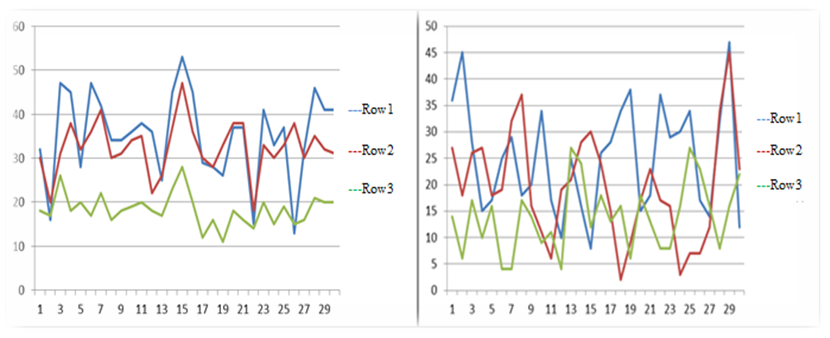
Figure
Correlation analysis using the Spearman criterion proved the reliability of the positive correlation between the components “involvement” and “control” (rs = 0.607, at p <0.01) “involvement” and “risk taking” (rs = 0.752, at p <0, 01), “control” and “risk taking” (rs = 0.443, with p <0.01) in the group of urban adolescents. Correlation analysis using the Spearman test proved the absence of a reliable positive correlation and the tendency to negative between the components of “involvement” and “control” (rs = -0.126), for p> 0.01) “involvement” and “risk taking” (rs = -0.225), with p> 0.01) "control" and "risk taking" (rs = -0.026), with p> 0.01) in the group of rural adolescents. An important characteristic of the sample is the distribution curve of empirical data.
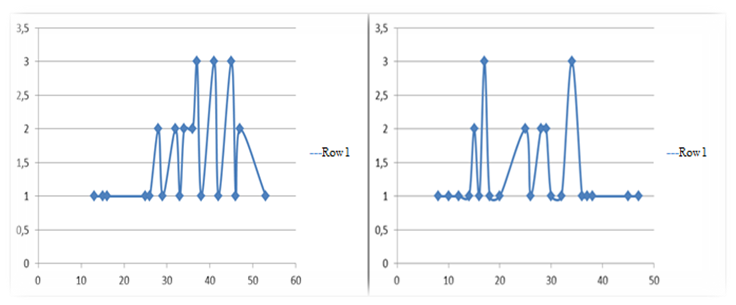
The curve of distribution data on the "involvement" scale of urban adolescents is close to normal. At the scale of rural adolescents, there are two values with the highest number of repetitions.
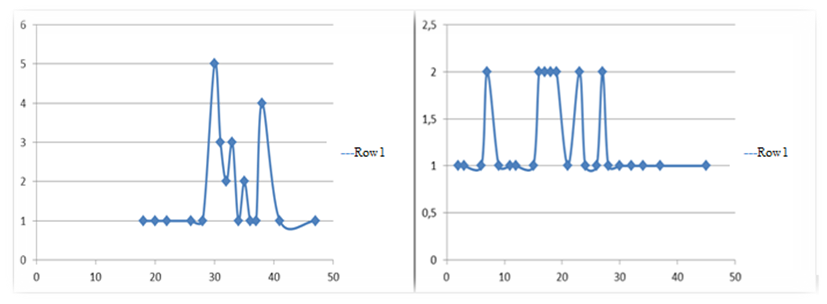
The curve of distribution data on the "control" scale of urban adolescents is close to normal. The distribution curve of rural adolescents is more similar to the sine wave, which indicates more pronounced individual differences on this scale, in contrast to urban.
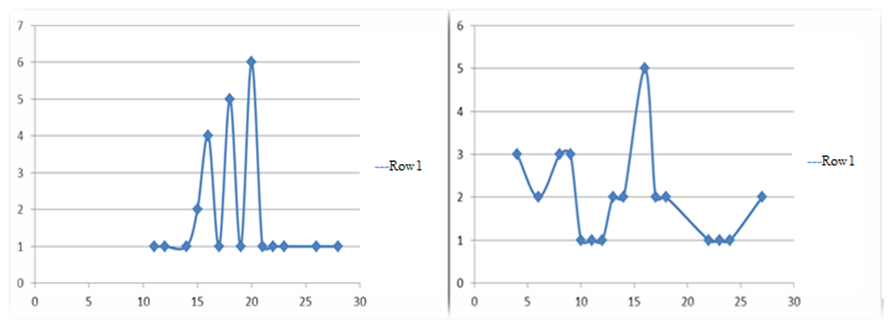
The curve of distribution data on the "risk taking" scale of urban adolescents is close to normal. The distribution curve of rural adolescents is more similar to the sine wave, which indicates more pronounced individual differences on this scale, in contrast to urban.
Based on the analysis the data distributed on three scales: "involvement", "control", "risk taking" reveals a certain pattern; a group of adolescents living in the city are more homogeneous in the formation of hardiness than adolescents living in rural areas. This may be due to the very structure of the population. The polarization in the city that began in the 90s of the last century is close to completion. Stratification of the population affected education as well. Educational institutions that have the status of a gymnasium or Lyceum, have the right to choose; for admission to such educational institutions the student has to pass the test. As a result, urban schools have approximately the same contingent of students, both in terms of intelligence and well-being of parents. Such kind of stratification is impossible in rural areas. There you can see the children of millionaire farmers and the children of unemployed studying in the same class.
Further, we compared the averages across all the scales.
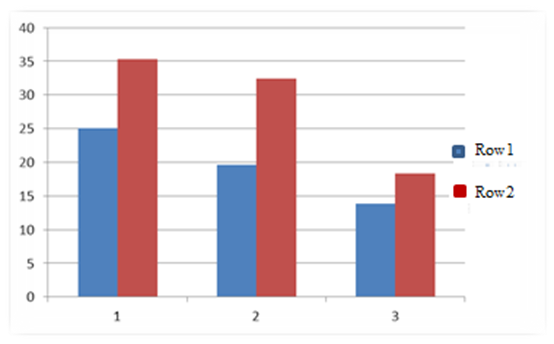
The results of the application of mathematical statistics using the Mann-Whitney U-test showed significant differences in the mean values in the groups of respondents. A significant increase in the components of hardiness in urban adolescents for the following components: "involvement "(U =217.5 at p<0.01)," control "(U =122.5 at p<0.01)," risk taking» (U =235 at p<0.01).
Conclusion
The obtained data confirm the importance of the social factor in the formation of hardiness. Statistically significant differences in the formation level of hardiness of adolescents living in the modern city and in rural areas for all factors are revealed.
Personal resistance to adverse environmental influences determine the stressfulness level of environment for human life.
The modern urban environment is characterized by dynamic development, often spontaneous, being insufficiently safe and comfortable does not take into account the psycho-physiological, psychological characteristics of residents, often poses a threat to their health. City residents are characterized by alienation, anxiety, low contemplation, and an increased need for perfect and diverse actions (Zhdanova, 2011).The peculiarity of the rural way of life is a strong dependence on climatic conditions, in the low rhythm of life, in the unity of work and life, in the absence of urban anonymity. Public opinion in the village has a huge value, social control is very pronounced, age-old traditions are preserved, tolerance and readiness for change are reduced. Rural residents are characterized by simplified forms of communication, lower risk of mental stress (Gavrilova, 2012). The results obtained in this study are due to several factors. The first factor is the features of human life activity ensuring living conditions. As a rule, a person in a metropolis is dependent on many external factors that determine the conditions of performance or change of his or her activities. Under the external factors of the metropolis is understood the schedule of public transport, the normalized working day, meeting which is not previously planned, constant "burning" things at work, etc. For successful maneuvering in urban conditions, a person needs flexibility, without which a person will experience constant stress in an urban environment. However, as an adult, you can also develop strong beliefs. The relationships between parents and child have a huge impact on the severity of the components. If the child feels support and trust, love and approval, then he will have a well-developed component of involvement. If parents allow the child to take the initiative, teach them responsibility for their actions, allow them to cope with the tasks on their own, then the control component will be expressed. In rural areas, the person himself sets the trajectory of his activities, the condition of which is more influenced by weather conditions. Thus, the rural resident experiences less stress compared to urban residents exposed to rapidly changing conditions. The second factor is involvement. A person is considered to be involved in the activity when a person not only finds meaning and positive moments in the performance of the activity, but also gets pleasure from it. Thus, in urban conditions, a person is more likely to engage in impressive activities professionally than a person in rural areas. The third factor is control. By controlling the environment, a person inspires himself that he is able to control it and influence the changes. In an urban environment, a person needs to control the rapid change of events and time, so as not to miss the important and significant aspects of the activity. The fourth factor is risk taking. According to the study, metropolitan residents have higher risk acceptance than rural residents. Risk-taking refers to a person's belief that all events in his life contribute to his development. The value of experience for a person implies the action of a person in the absence of guarantees for a positive outcome of events or success.
The data obtained in the study can be the basis for the creation of programs for the formation of adolescents’ hardiness.
References
- Bartone, P. T. (2000). Hardiness as a resiliency factor for United States Forces in the Gulf War. In J. M. Violanti, D. Paton & C. Dunning (Eds.), Posttraumatic stress intervention: Challenges, issues and perspectives (pp. 115–133). Springfield, IL: Charles C Thomas Publisher Ltd.
- Berezkina, O. A. (2006). Aktualizaciya i razvitie zhiznestojkikh kachestv lichnosti budushchikh specialistov (Doctoral dissertation) [Actualization and development of viable personality traits of future specialists]. Retrieved from: https://www.dissercat.com
- Bright, D., & Jones, F. (2003). Stress. Teorii, issledovaniya, mify [Stress. Theory, research, and myths]. Spb: Praim-Evroznak.
- Frankl, V. (2001). Psikhoterapiya na praktike [Psychotherapy in practice]. St. Petersburg: Yuventa.
- Gavrilova, N. V. (2012). Psikhologicheskie osobennosti zhitelej sela: analiz i praktika issledovaniya [Psychological characteristics of villagers: analysis and research practice]. Concept, 10, 1-8.
- Jimenez, B. M., Natera, N. I. M., Munoz, A. R., & Benadero, M. E. M. (2006). Hardy personality as moderator variable of burnout syndrome in firefighters". Psicothema, 18(3), 413–418.
- Klag, S., & Bradley, G. (2004). The role of hardiness in stress and illness: An exploration of the effect of negative affectivity and gender. British Journal of Health Psychology, 9(2), 137–161.
- Knizhnikova, S. V. (2005). Pedagogicheskaya profilaktika suicidal'nogo povedeniya na osnove formirovaniya zhiznestojkosti podrostkov v usloviyakh obshcheobrazovatel'noj shkoly (Doctoral dissertation) [Pedagogical prevention of suicidal behavior based on the formation of the vitality of adolescents in a secondary school]. Retrieved from: https://www.dissercat.com/
- Kobasa, S. C. (1979). Stressful life events, personality, and health – Inquiry into hardiness. Journal of Personality and Social Psychology, 37(1), 1–11.
- Leontiev, D. A., & Rasskazova, E. I. (2006). Test zhiznestojkosti [Viability test]. Moscow: Smysl.
- Loginova, M. V. (2010). Psikhologicheskoe soderzhanie zhiznestojkosti lichnosti studentov (Doctoral dissertation) [Psychological Content of the Resilience of Students' Personalities]. Retrieved from: https://www.dissercat.com/
- Maddi, S. R. (2002). The Story of Hardiness: Twenty Years of Theorizing, Research and Practise. Journal of Consultancy Psychology, 54, 173-185.
- Maddi, S. R., & Kobasa, S. C. (1984). The hardy executive: Health under stress. Homewood, IL: Dow Jones-Irwin.
- Maddi, S. R. (2004). The Role of Hardiness and Religiosity in Depression and Anger. International Journal of Existential Psychology & Psychotherapy, 1, 38-49.
- Nalivayko, T. V. (2006). Issledovanie zhiznestojkosti i ee svyazej so svojstvami lichnosti (Doctoral dissertation) [A study of vitality and its relationship with personality traits]. Retrieved from: https://www.dissercat.com/
- Nishizaka, S. (2002). Kindergarten teachers' mental health: Stress, pre-school teacher efficacy, and hardiness. Japanese Journal of Educational Psychology, 50(3), 283–290.
- Stetsishin, R. I. (2008). Lichnostno-psikhologicheskie resursy zhiznestojkosti :na primere lichnosti vracha-klinicista (Doctoral dissertation) [Psychological Resilience Resources: Case Study of the Personality of a Clinician]. Retrieved from: https://www.dissercat.com/
- Watson, D., & Pennebaker, J. W. (1989). Health Complaints, Stress, and Distress: Exploring the Central Role of Negative Affectivity. Psychological Review, 96, 234-254.
- Westman, M. (1990). The relationship between stress and performance: The moderating effect of hardiness. Human Performance, 3(3), 141–155.
- Zhdanova, S. Yu. (2011). Struktura gorodskikh potrebnostej u zhitelej gorodov-pobratimov (na primere issledovaniya zhitelej gorodov Permi i Oksforda) [The structure of urban needs among residents of twin cities (on the example of a study of residents of the cities of Perm and Oxford)]. Vector of Science, 10, 132-136.
Copyright information

This work is licensed under a Creative Commons Attribution-NonCommercial-NoDerivatives 4.0 International License.
About this article
Publication Date
15 November 2020
Article Doi
eBook ISBN
978-1-80296-092-1
Publisher
European Publisher
Volume
93
Print ISBN (optional)
-
Edition Number
1st Edition
Pages
1-1195
Subjects
Teacher, teacher training, teaching skills, teaching techniques, special education, children with special needs, computer-aided learning (CAL)
Cite this article as:
Mukhametrakhimova, S., Saitova, R., Ivanova, E., & Moiseyeva, N. (2020). Study Of Hardiness Of Rural And Urban Adolescents. In I. Murzina (Ed.), Humanistic Practice in Education in a Postmodern Age, vol 93. European Proceedings of Social and Behavioural Sciences (pp. 755-762). European Publisher. https://doi.org/10.15405/epsbs.2020.11.77

